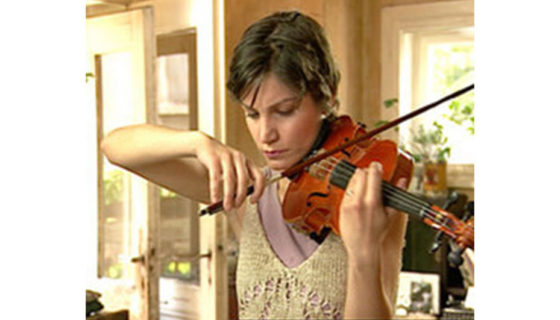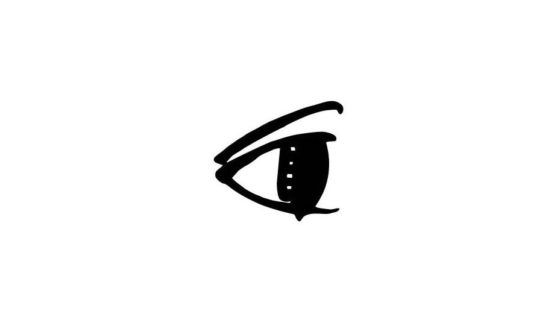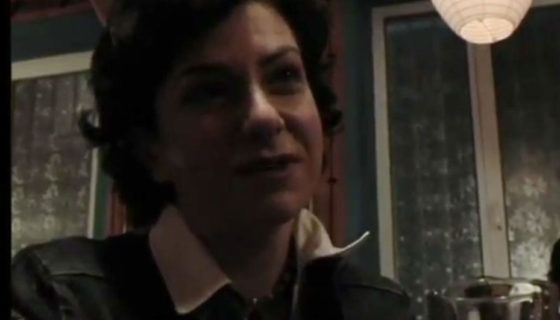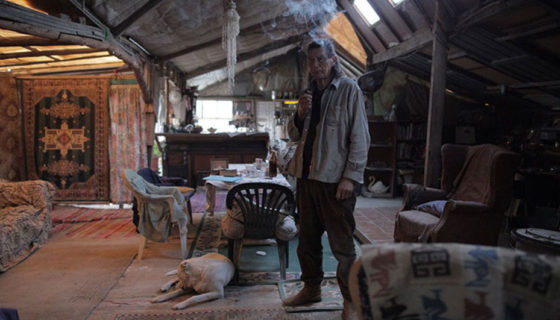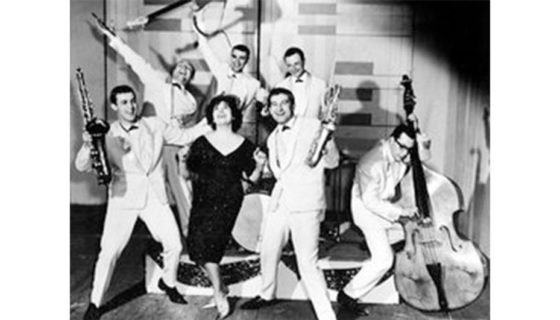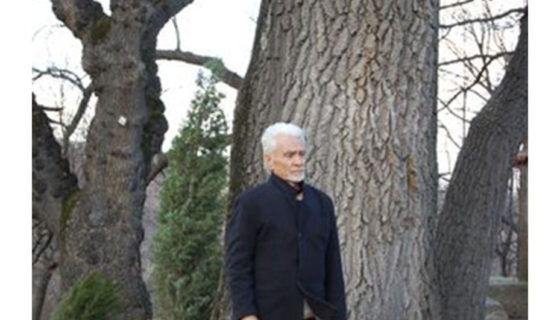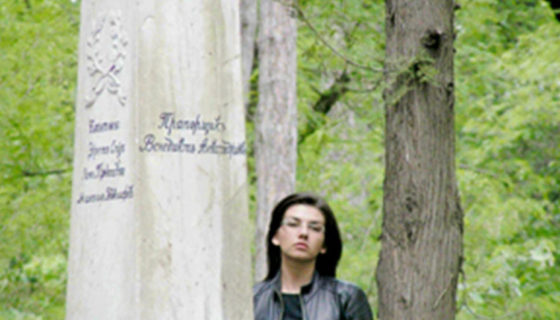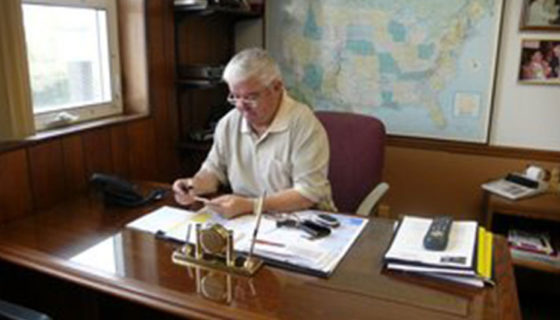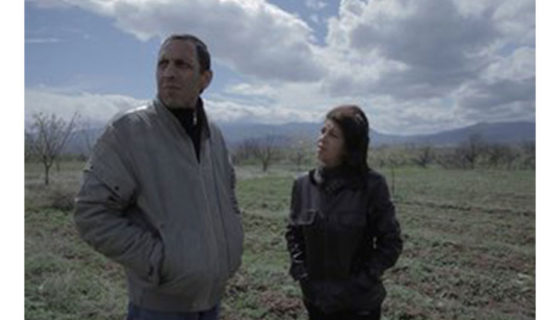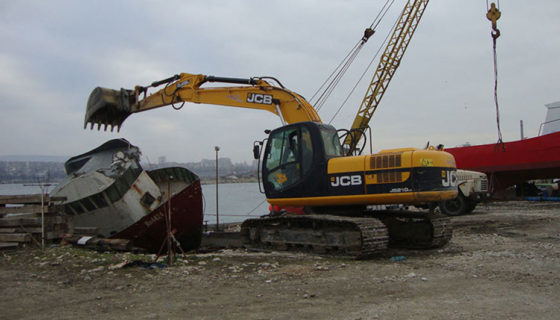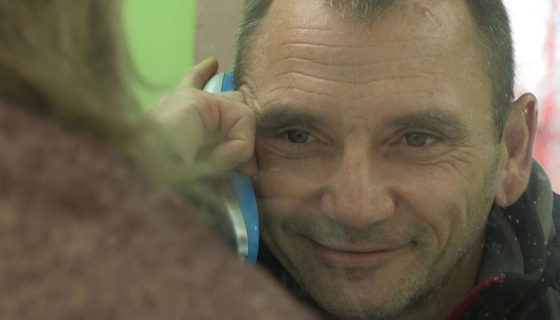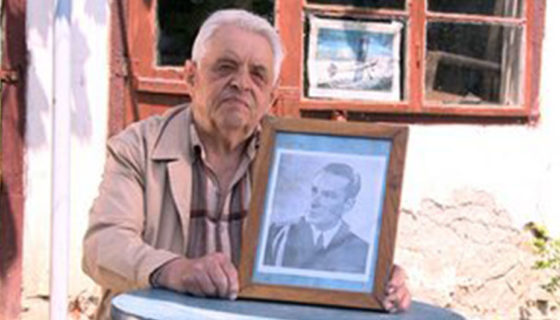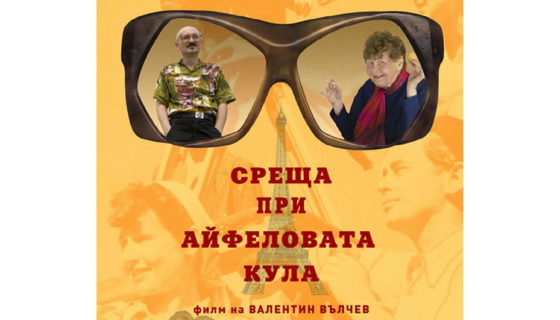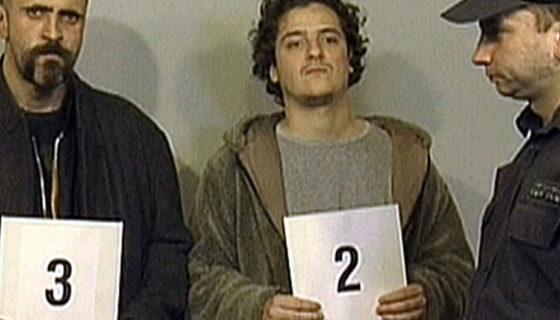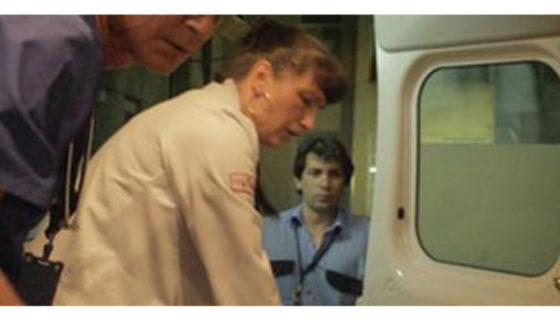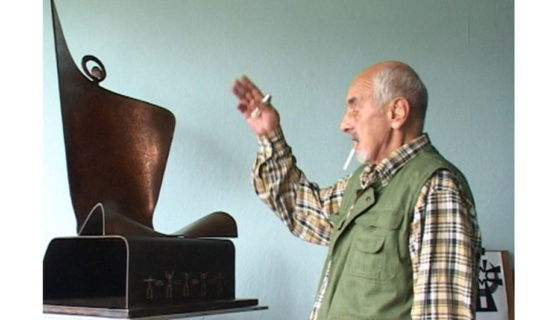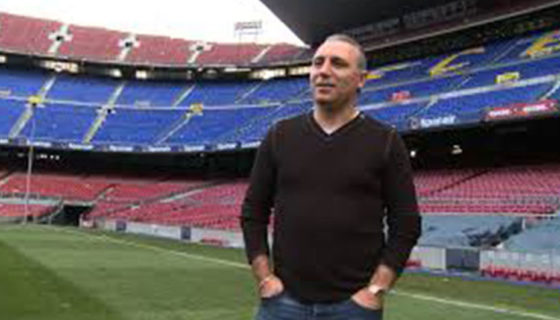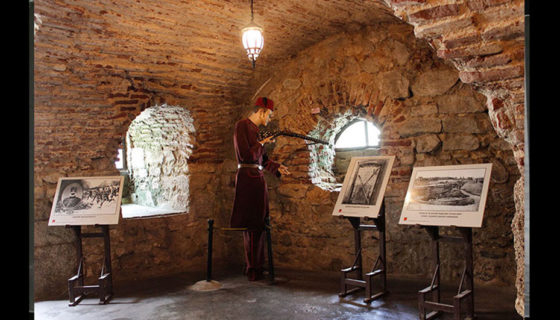- A documentary about the strange life of the last magician of a great generation of Bulgarian conjurers: Antranik Shavarsh Arabadzhian, alias Astor, as he is known across the world. He received an Oscar for magic art in US as early as 1981, even before he turned 40. He has reached heights, preserving his striving for conquests. Now he pursues a dream: the unperformed Houdini’s illusion.
- There is a cliche used to describe the Czech historian Konstantine Jirecek: Friend of Bulgaria. This film tells about a man and a scientist of more complex attitudes towards the Bulgarians. His observations are valid even today. Some of them are quite negative. And yet that is what true friends are for, they are the ones we need to meet more often.
- A documentary about the lifestories of several mothers, about the unforgivable and inexplicable inhumanity of the society in regard to healthy and capable women who have become lifetime caregivers, sick-nurses and companions. A film about those mothers, who’s feat-like lives are not topping the agenda of our present day, more and more devoid of humaneness.
- A documentary about the great Victorian statesman, writer, intellectual, father of modern liberalism and prime minister of Great Britain, who served four terms and whose political career oddly came in touch with the Bulgarian National Revival. An attempt to rehabilitate Mr Gladstone and his contribution to the Bulgarian cause, which suffered a “collateral damage” in the Cold War era.
- Uncle Methodi and aunt Budinka from the village of Lozen are industrious people, bound to their land and concerned about it. Until the restitution of the land within its actual limits is protracted for an indefinite period of time they, like many others, cultivate small pieces of land in the most primitive way, in order to make their living.
- A father murdered his son. In a state of alcoholic delirium a youth murdered his friend. A 21-year-old boy shot a policeman… Three people who have taken a life. Faced with their own death – the death sentence – they tell about what happens with them at the moment when they are between death and… death. A documentary attempt to look evil in the eye. The evil that everyone has in the dark side of his soul, which makes us understand what Good means…
- A hectic tour round the night music clubs of Sofia. A mix of musical genres, incompatible styles and characters, different in mentality, occupation and age. Nightlife in its diverse dimensions: a projection of what we are today.
- The film follows a period in the career of great Bulgarian painter Nikolay Maistorov. The plot of the story links together the artist’s work on a series of 27 monumental pictures on a Bible story and the result. This facilitates the creative creed of the past master to be exposed as well as the establishing of his expressive manner.
- This is a story about two guys, Martin and Georgi. In 1993 they lived in an orphanage. Georgi had IDs, so he could be adopted, while Martin didn’t have any. Today Georgi has a family in Sweden and studies at a college, while Martin looks after cows in a farmer’s cowsheds. The film tells their story and the stories of others like them. Since 1993 many things have improved in the orphanages in Bulgaria. But in 2008 there still were 2,391 abandoned children here!
- A story of a group of bear keepers and their bears concentrating on the strange and cruel link between man and animal whose fate is to spend their lives on the two ends of a chain.
- A documentary about two different choices of life style. Two different girls with the same powerful pain and hope for themselves on the way to find a meaning of the life they are living.
- Maybe nowhere in the world the difference between reality and fiction is felt that strongly as in the Spanish town of Tabernas. More than 600 spaghetti westerns were filmed there. The film characters leave their marks not only on the world of the motion pictures, but also on the life of several generations of residents of the city. The locals live in a surreal context, caught in a kind of uncertainty between fiction and reality. Life in the city is passing like an endless film.
- In the light of the preserved documents about writer Yana Yazova reveals her singular creative and human life story. The work presents her voluntary creative seclusion as a Bulgarian version of resistance to spiritual repression and conformism. A documentary essay on vengeance of memory upon the myths, lies and silence…
- A documentary about the life of Taurian ethnic Bulgarian, writer Misho Hadzhiyski (1916–44), who lead some 2,000 ethnic Bulgarians from Ukraine to Bulgaria in the WWII. He commuted suicide not to fall in the enemy’s hands. A story about the life of the ethnic Bulgarians, who have found themselves far from their homeland. A documentary about talent… About dignity… About the choice to be a man and the price one pays for one’s choice…
- A film that was initiated in 1992 and was finished in 2003. Good stuff, that has mellowed 11 years. It is about a man, who had two death sentences. He has lived in Sweden, in France. He doesn’t want to come back to Bulgaria, because… A film about human nature… About our plight…
- A film about orphaned gifted children and adolescents. It shows the hardships encountered in finding out and supporting gifted children. It depicts the self-devoted activities of great Bulgarian opera singer Raina Kabaivanska, as well as her extreme concern in raising and preserving talents.
- A picture about Lea and Eddy. The film tells by songs, that sucked the time and its spirit in them, a truthful legend of the great singer, who though deceased, still lives in her songs. This is a film about the Eternal Love and the fateful relationship between a man and a woman and about their life in music. is a picture both about Lea Ivanova and Eddy Kazassian and about our parents’ generation, who strived for their identity in strange and fearful times. This film refers to the gifted ones, who regardless of the time and the space are capable through their powers to blow up the walls of alienation between people, making them better.
- The film traces the schism in the Bulgarian church. Some of its reasons are rooted in the Bulgarian history, others – in the events of the last several years. The people’s need for faith is in contradiction with the petty quarrels in the higher clergy, who have forgotten their mission of being spiritual leaders.
- The movie tells the captivating story of a monastery, destroyed by the communist regime, as seen by a young monk, Father Nikanor. He used to be a successful broker working at the American NASDAQ stock market, he traded with securities on Wall Street and he worked at the Caroll Financial Services. He has taken the vows not to become a hermit, rather to save his soul and entertain people’s hope. He established a committee on the rebuilding of the monastery and was co-financed under the European SAPARD programme to breed water buffalo. He also developed an organic farm. The monastery of the Holy Martyrs and Unmercenary Healers Cosma and Damian rose from the ashes thanks to his heroic efforts. The rebuilding and the reconstruction of the monastery is happening right in front of our eyes like some kind of a miracle.
- A “science” film about the “flora” and “fauna” as well as the life down the river valley of Perlovetz – the river symbolic of Sofia. A grotesque metaphor of the “river of life”.
- Vassil Ivanov was a very talented Bulgarian artist who received little fame and recognition in his home land. His paintings are famous all over the world and have shared tha walls of galleries with the classics of French impressionism. However, he is still unrecognized in Bulgaria, deliberately or otherwise. No-one is a prophet in his own home.
- in a religious procession to appease the spirit of his grandfather... Can one change anything today when nothing depends on him anymore?
- The daily grind of several people from a town in the country. Their lives pass between the efforts to make both ends meet, family concerns and the pub. But there is a day each year, when people put aside their dull roles and start feeling themselves important and significant. They assume the leading parts in the Re-enactment: the traditional staging of the outbreak of the April Uprising, to mark the day of Koprivshtitsa town.
- Made in commemoration of the 130th anniversary since the Russo-Turkish War of 1877–78, the documentary features the memorials and monuments erected by the Russian Empire in Pleven, Plovdiv, Ruse, Varna, Silistra, Stara Zagora, Sofia and the village of Shipka. Of them, the most popular are these in Sofia: in the Doctor’s Garden and Ruski Pamentnik (Russian Monument).
- If spotting Tom Hanks at the Annual Academy Oscar Awards Ceremony held at Kodak Theatre, one inevitably sees a personable old man in a tuxedo, sitting next to him. He has greyish-blue eyes and holds himself upright. This man is Alan Wilson or… Hasan Ibrahimov, Tom’s father-in-law. Hasan is 76-year-old. He fled from Bulgaria, from the Kutsian labour camp, when he was 20. Since then, his body is there, while his soul has remained here. For 56 years now…
- The documentary follows the course of lives of schoolmates from Kazanlak, who graduated in 1950. Against the background of the historical events in Bulgaria during the second half of the 20th century the characters of the film tell their life experiences achievements and disappointments, joys and sorrows.
- A film about the Gypsy “middle” class: they are laughing with grief and crying with happiness. It feels like living in a Romany neighbourhood. The leading characters live in the urbanized part of the neighbourhood, the other part of which is a ghetto and there is a square with shops and cafes between them. The two parts live in comic contrast, sharing, of course, inevitable similarities. The film follows the events in the lives of four locals over a year.
- A modern mixture of feature, documentary cinema and reality, in which the director films himself and three of his friends documenting their attempts to meet the one true love. On the verge of their 30s each one of them has had love disappointments, and together the four of them try to find the key to the-oneand-only love. The romantic “dramedy” also touches on the immigration theme, as the characters – three Bulgarians and one Macedonian – live in Helsinki, which becomes the scene of their love quest.
- Few stories about Black Sea sailors, rich in dramatic tension and flashes of humour: in accordance with a EU programme for reducing finishing cutters, Alexander agreed to have his ship destroyed... Dimitar has spent 45 years at sea. In 1987 he bought a VHS Camcorder and for years recorded the life onboard the ships around the world. Hristo's fishing vessel was taken in 2012, near the Romanian coast, on charges of poaching. Zoya and Plamen are teachers. To survive on their meagre salaries they have been going out to sea in their fishing boat to catch rapa whelks for years.
- A charmer as handsome as Apollo, women’s favourite, undisciplined, a bruiser, a fascist: Who was he actually? Who was Dimirtar Spisarevski? The film is a panopticon of a kind of different segments of our society today, which in a funny and absurd and at times, in a dramatic and a fanatical way asserts their right to have their own opinion and interpretation of the character and the right to identification with him.
- In 2004, archaeologist Georgi Kitov working on excavations in the Valley of Kings opens up a tomb that has not been robbed. The richness of the artefacts is indicative of a royal burial and, step by step, scientists identify it as the burial of Seuthes III. The team comes across another unexpected discovery – a bronze head, a masterpiece of antiquity, buried in front of the tomb’s entrance. With thеse finds and the series of questions and guesswork they provoke as a starting point, the film gradually reveals the psychological portrait of a Thracian king and his role in a complicated age.
- The film is devoted to the 50th anniversary of the saving of the Bulgarian Jews from Nazi genocide. The author looks in on the lives of three of his contemporaries: Simon Varsano – a 38-year-old photographer; Abraham Behar – a 79-year-old rabbi; Yossif (Joseph) Sarchadjiev – a 49-year-old actor. The structure resembles three shorts united by the leitmotif of the preservation of human dignity in spite of life’s vicissitudes.
- The film relates the life and art of Panaiot Todorov (1883-1943), known for his poetic pseudonym Sirak Skitnik. Painter and critic at the same time, he is one of the most prominent personalities in Bulgarian artistic life of the period between the two World Wars. He influences different fields – the fine arts, architecture, theatre, cover design, radio programs… Nowadays he comes to be almost completely unknown to the public at large in his own country. His brilliant pen though is still topical and his judgments prove to be trustworthy.
- Despite her outstanding talent, Slavka Deneva was forsaken, pressed and ignored by the totalitarian institutions. Her first exhibition took place a decade after her death, in 1994. Today her works occupy their well-deserved place among the eminent representatives of modern Bulgarian painting. She is the biggest individual donator in the whole history of Communist Bulgaria.
- A bomb blast during a tussle of soccer fans in downtown Sofia claims an innocent life. An investigation is launched. The interrogations confront the detective with a gang of violators, who commit acts of vandalism at football stadiums. Dimo Kareto is one of them, a teenaged football buff, who starting with playing football in his neighbourhood as thousands of kids do, ends up in court.
- In a city where 13 ambulances struggle to serve almost 2 million, Krasi, Mila and Plamen are our unlikely heroes: chain-smoking, filled with humour, relentlessly saving lives against all odds. Yet, the strain of a broken system is taking a human toll: how long can we count on their humanity to handle it? The film uses an unorthodox creative form, which dodges sensationalism. We are captivated by the faces of our protagonists, their reactions, and the sounds surrounding one of sofia's last ambulances.
- A small village in Bulgaria. For centuries on end Bulgarians and Turks have co-existed here. In the so-called regeneration process the names of the ethnic Turks were changed. Unrest begins; a lot of people emigrate. Today some of those are back, but the relations between the people from the village (and this applies not only to that village) are complicated. Tension is witnessed even in the children’s games…
- Spirit and Matter is an attempt to delve into the spirit of the artworks by sculptor Alexander Diakov, both realized and those that have remained only projects. The sculptor of artworks, conveying universal ethical messages, has become a legend among the Bulgarian boxing and movie people and artistic and Bohemian circles in Sofia in the second half of the last century. His artistic career was marked by the creative principles he stood for and that formed his social and life views, shaping the unique personality of Alexander Diakov.
- 18 years after the event a film crew decides to throw some light on this Bulgarian nebulosity by making a documentary.
- This is a film about the phenomenal sports career and the tempestuous life of the most famous Bulgarian worldwide – football superstar Нristo Stoichkov. It is a dramatic documentary covering the triumphs and collapses of the born winner; the mission of the leader, who inspires and leads those around to him throughout the crucial moments in life and on the pitch; the real events and the myths; the national self-confidence and the national nihilism…
- The film presents how in the second half of the XIX century down the Danube river from Europe into Bulgaria were rushing art and letters and civilization, that bit by bit were awakening the craving for novelty mind of the Bulgarians. Initially the modern mentality made its way among the best representatives of the Bulgarian national revival at the time. And it finds its expression in enterprise, in new look upon the economics, upon money-making and expense, upon living standards and education.

